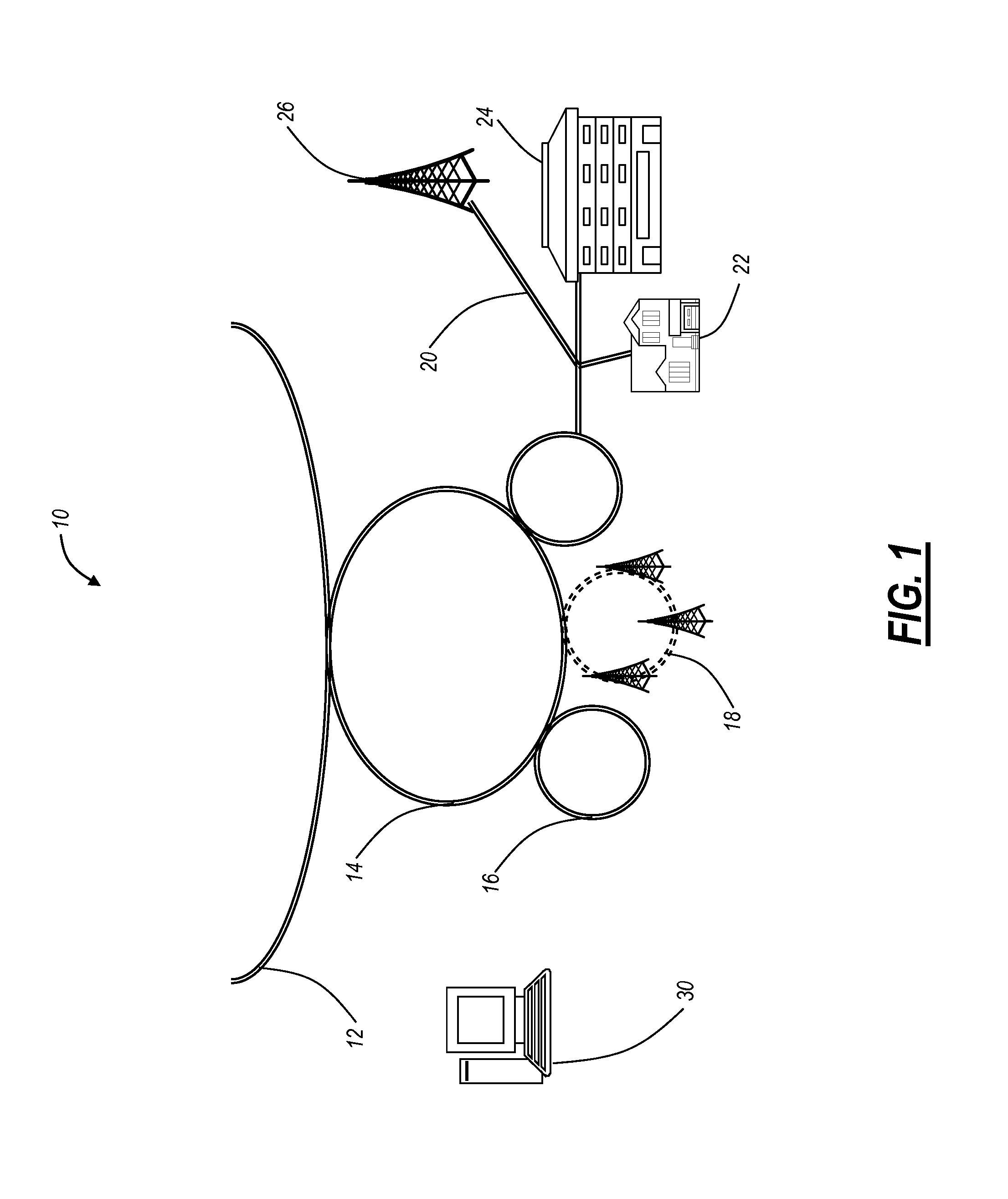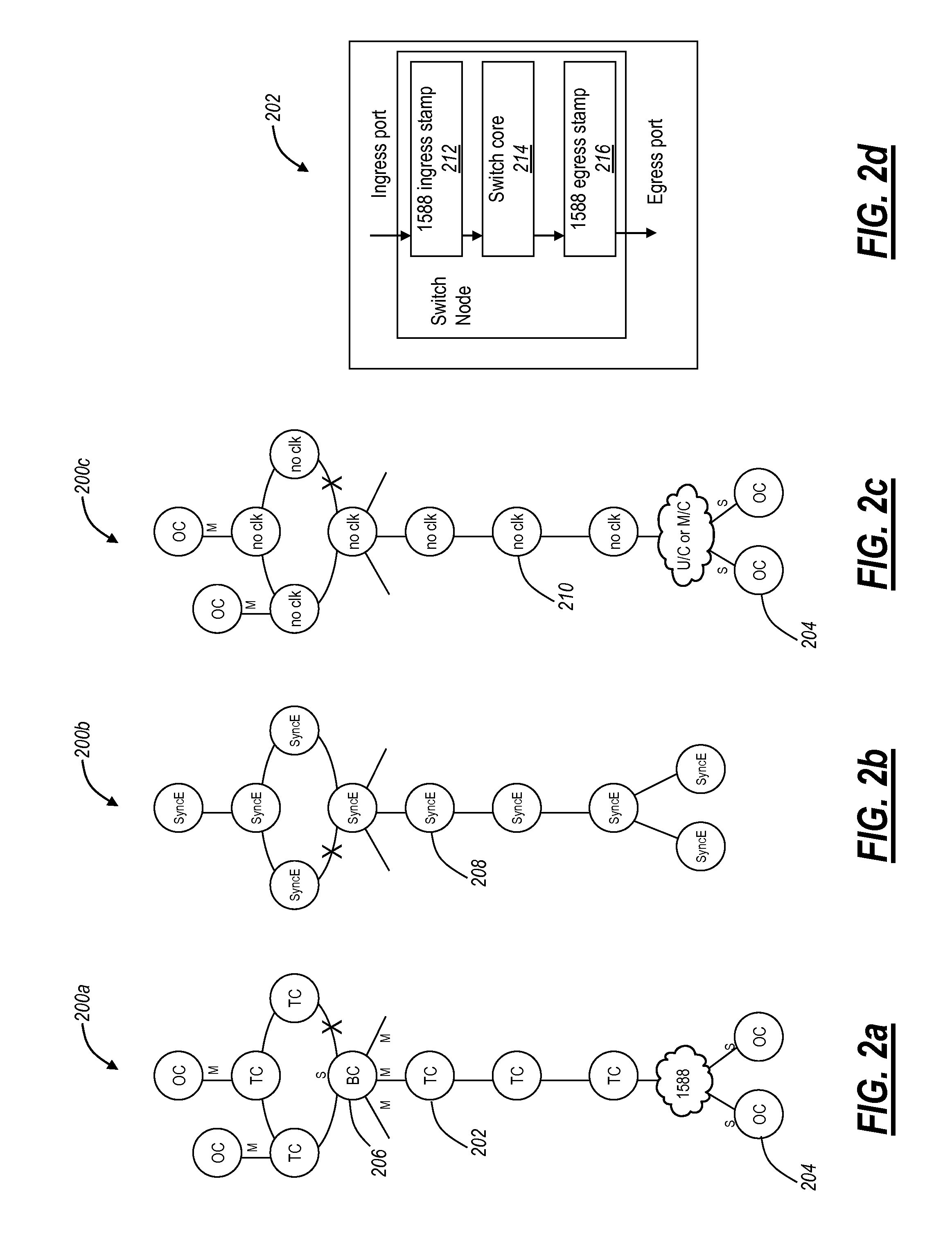Ethernet network synchronization systems and methods
a network synchronization and network technology, applied in the field ofethernet networks, can solve the problems of adding timing jitter and delay, not being available to further nodes, and most conventional networks do not have ptp-capable nodes, so as to reduce the number of slaves and achieve high stability
- Summary
- Abstract
- Description
- Claims
- Application Information
AI Technical Summary
Benefits of technology
Problems solved by technology
Method used
Image
Examples
Embodiment Construction
In various exemplary embodiments, the present invention relates to Ethernet synchronization systems and methods that combine Sync-E and PTP 1588 algorithms. The present invention includes systems and methods for Ethernet networks and node configurations that include a set of rules on node placement, such as Boundary Clock (BC) nodes and Sync-E nodes, a clock selection algorithm, a holdover algorithm, and the like. Advantageously, the present invention provides an architecture that allows practical and real-world useful clock propagation through placement of BCs and Sync-E nodes for best performance. Each of the Sync-E and PTP 1588 Standards define a theoretical general set of tools and guidelines with gaps in functionality and application specific details. Practical experience and theoretical design are embodied in the present invention to define a very specific set of rules on how to build a practical, reliable, and accurate packet based synchronization network. The present inventi...
PUM
 Login to View More
Login to View More Abstract
Description
Claims
Application Information
 Login to View More
Login to View More - R&D
- Intellectual Property
- Life Sciences
- Materials
- Tech Scout
- Unparalleled Data Quality
- Higher Quality Content
- 60% Fewer Hallucinations
Browse by: Latest US Patents, China's latest patents, Technical Efficacy Thesaurus, Application Domain, Technology Topic, Popular Technical Reports.
© 2025 PatSnap. All rights reserved.Legal|Privacy policy|Modern Slavery Act Transparency Statement|Sitemap|About US| Contact US: help@patsnap.com



